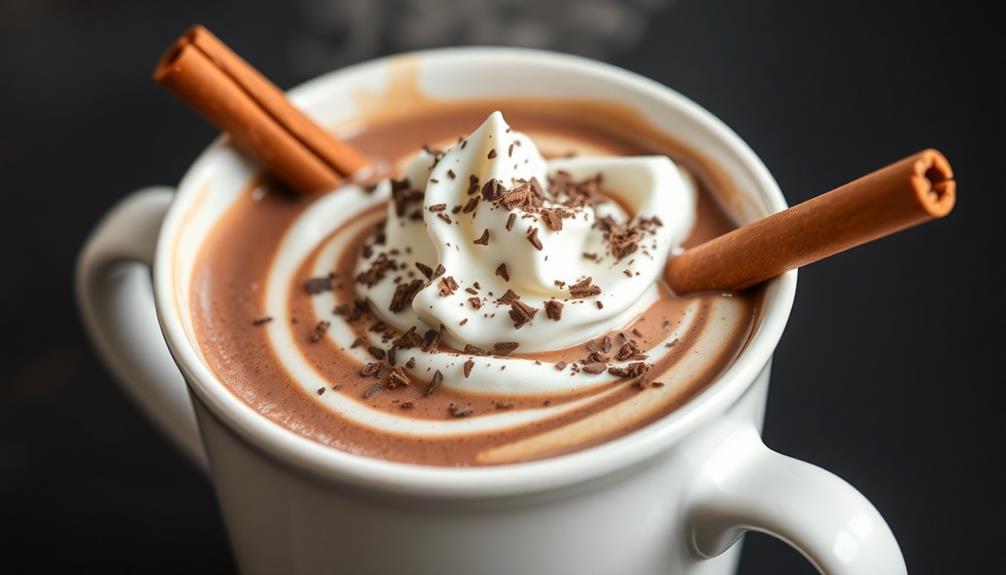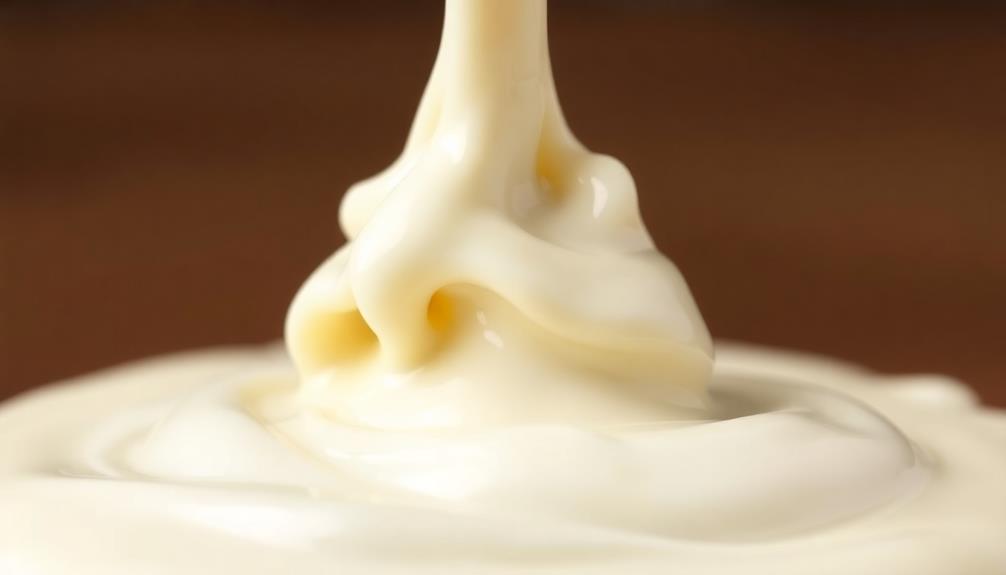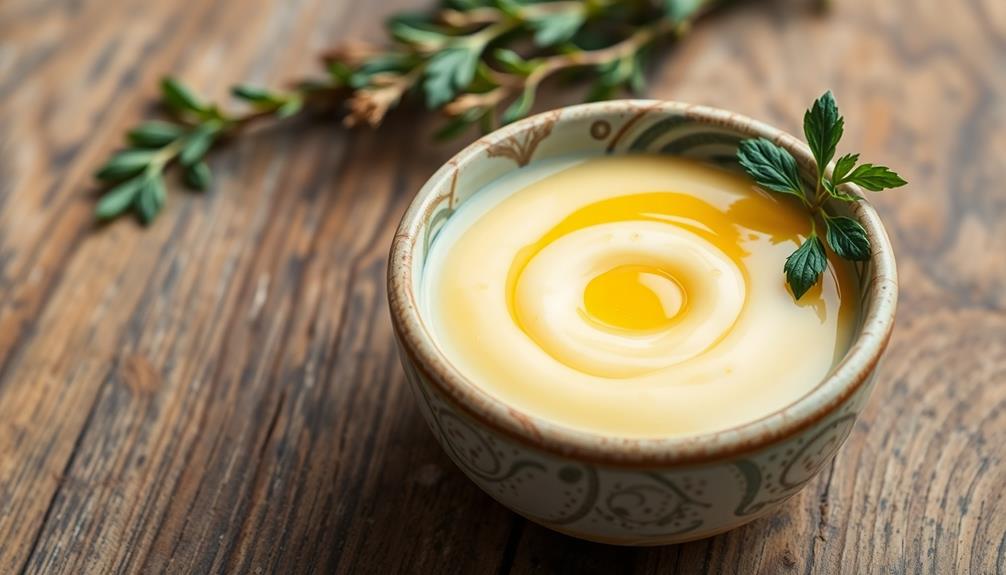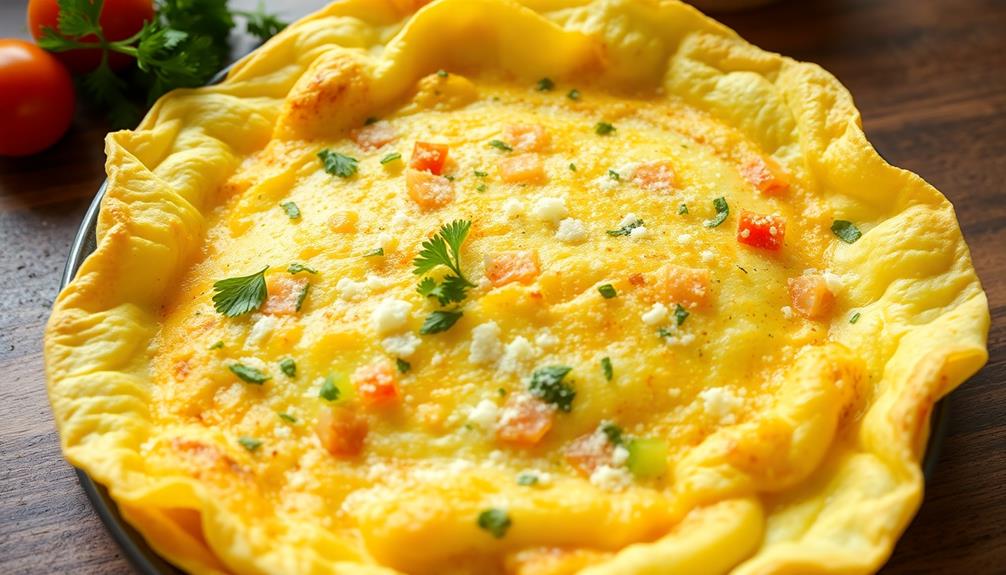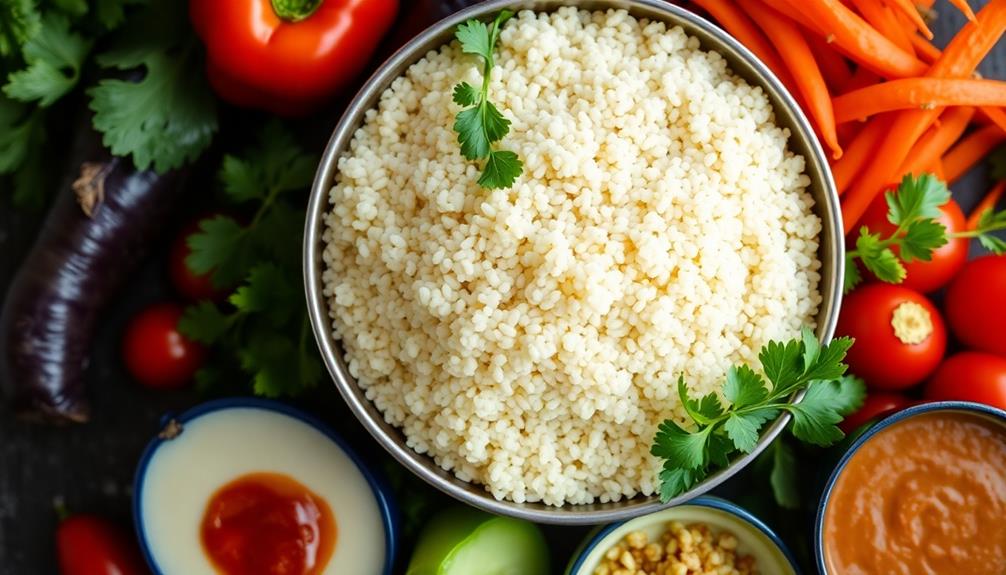Unlock the secrets to crafting the perfect cup of coffee by exploring its rich history and essential brewing techniques. Whether you prefer a French press, drip machine, or pour-over setup, the ideal ratio is 2 tablespoons of freshly ground beans per 6 ounces of filtered water heated to 200-205°F. Precise timing, even extraction, and attention to detail are key – grind size, water temperature, and brewing time all impact the final flavor. Experiment to find your personal preferences, from strength to preferred brewing method. With the right know-how, you'll be sipping your ideal morning cup in no time.
Key Takeaways
- Use a standard ratio of 2 tablespoons of freshly ground coffee beans per 6 ounces of filtered water for optimal flavor.
- Heat water to the ideal temperature range of 200°F to 205°F to extract the most desirable flavors from the coffee.
- Experiment with different grind sizes and brewing methods, such as French press, drip machine, or pour-over, to find your preferred taste.
- Pay attention to the extraction process, allowing the coffee grounds to bloom for 30 seconds before pouring the water for a balanced cup.
- Personalize your coffee experience by adjusting the coffee-to-water ratio and exploring various additions, such as cream or sugar, to suit your taste preferences.
History

The origins of coffee's storied history can be traced back to the Ethiopian highlands, where the aromatic beans were first discovered and cultivated.
Legend has it that a goatherd named Kaldi noticed his herd becoming more energetic after eating the berries from a certain bush. Intrigued, Kaldi shared his discovery with the local monastery, and soon, the monks were roasting and brewing the flavorful beans.
As coffee gained popularity, its ethical sourcing became increasingly important, leading to practices such as ethical brew battles between major brands and local roasters.
From there, coffee's popularity spread throughout the Arabian Peninsula and eventually to Europe, where it became a symbol of refined sophistication.
The Dutch introduced coffee to the Americas in the 17th century, and it quickly became a staple beverage, fueling the growth of bustling urban centers.
Today, coffee is one of the most widely consumed drinks in the world, with countless varieties and brewing methods to explore.
Its rich history continues to captivate coffee enthusiasts and casual drinkers alike.
Recipe

Perfect Coffee Recipe
The perfect cup of coffee is an elusive and highly subjective pursuit, but with the right technique and attention to detail, you can brew a delightful and aromatic beverage that will start your day off right.
Whether you prefer your coffee bold and rich or light and smooth, this recipe will guide you through the essential steps to achieve the perfect cup every time. From selecting the freshest beans to mastering the art of brewing, every detail makes a difference in creating a truly satisfying experience. Pair your perfect cup with a delicious sandwich made using the best homemade mayonnaise recipe, and you’ll elevate your meal to a whole new level. With just a few quality ingredients and a little care, both your coffee and your condiments can shine.
Brewing the perfect cup of coffee is both an art and a science, requiring a careful balance of variables such as water temperature, grind size, and brewing time. The type of beans and their freshness also play a crucial role in determining the final flavor. For those looking for a low-effort alternative to hot brewing, an **easy cold brew coffee recipe** can offer a smooth and refreshing option with minimal bitterness. Simply combine coarsely ground coffee with cold water and let it steep in the fridge for 12-24 hours, then strain and enjoy over ice.
By following this recipe, you'll be able to unlock the full potential of your coffee beans and create a consistent, flavorful cup that will satisfy even the most discerning coffee connoisseur.
Ingredients:
- 2 tablespoons of freshly ground coffee beans
- 6 ounces of freshly drawn, filtered water
- A coffee brewing device (such as a French press, drip machine, or pour-over setup)
Instructions:
Heat the water to a temperature between 195°F and 205°F.
If using a coffee machine, ensure that the water temperature is within this range.
For manual brewing methods, bring the water to a boil and then let it cool for about 30 seconds before pouring.
Add the ground coffee to the brewing device and pour the hot water over the grounds, making sure to saturate all the coffee.
Brew the coffee for 4-6 minutes, depending on your preferred strength, and then serve immediately.
Tips:
For the best results, use freshly roasted and ground coffee beans.
Experiment with different coffee varieties and origins to find your personal favorite.
Additionally, be mindful of your water quality, as the composition of the water can greatly impact the final flavor of your coffee.
Lastly, consider investing in a good quality coffee grinder to ensure a consistent grind size, which is essential for optimal extraction.
Cooking Steps
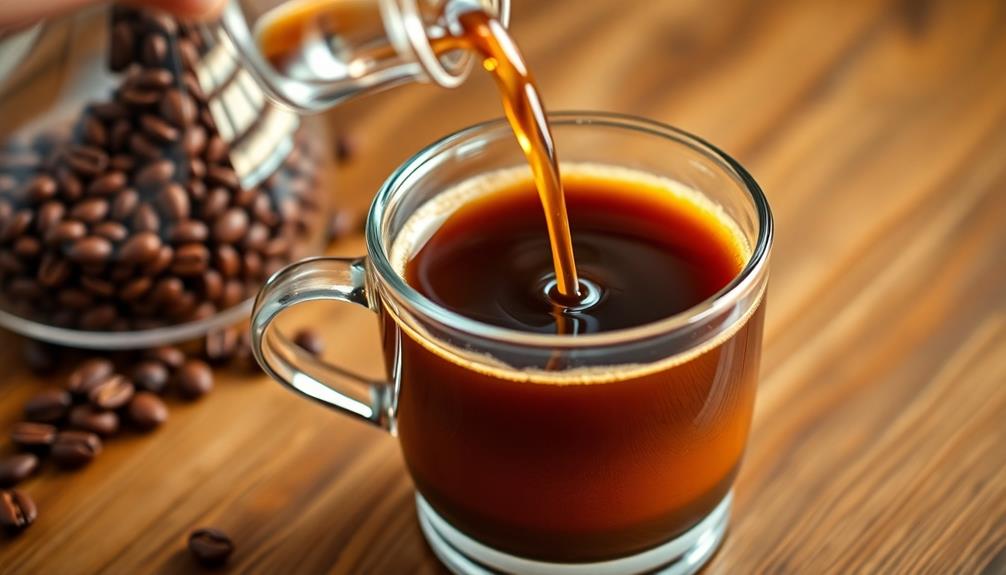
Start by grinding your coffee beans to your desired coarseness. Freshly ground coffee not only enhances flavor but also maximizes the benefits of fresh coffee's health advantages.
Next, heat the water to the optimal temperature, usually between 195°F and 205°F.
Then, add the coffee grounds to your brew basket and pour the water over them, allowing the coffee to brew for about 4 minutes.
Step 1. Grind Coffee Beans to Desired Coarseness

After grinding the coffee beans, you'll want to adjust the coarseness to your preferred texture. The grind size significantly impacts the flavor, body, and extraction time of your coffee.
Different brewing methods can also affect the caffeine extraction, similar to how steeping times influence caffeine levels in caffeine content in tea. Generally, a coarser grind is ideal for methods like French press or cold brew, which require longer steeping times. This allows for a fuller, richer extraction.
In contrast, finer grinds work better for quicker brewing methods like espresso or pour-over, where you want a more concentrated, intense flavor.
To find your ideal grind, start with a medium setting and brew a test batch. Taste the results and make adjustments accordingly.
If the coffee tastes sour or thin, try grinding finer. If it's bitter or muddy, go coarser. Keep experimenting until you land on the perfect grind for your preferred brewing technique and personal taste preferences.
Step 2. Heat Water to Optimal Temperature

With the right grind dialed in, you can now focus on heating the water to the optimal temperature. The key is to bring the water to a rolling boil, around 200-205°F (93-96°C). Any hotter and you'll risk burning the coffee, while cooler water won't properly extract the beans' flavors.
To achieve the perfect temperature, use a kettle or pot with a thermometer. As the water heats, watch carefully and remove it from the heat source just before it reaches a full boil. This slight reduction in temperature helps prevent the water from becoming overly oxygenated, which can lead to a bitter, flat taste.
For consistent results, aim to time the process so the water is ready right as you finish grinding the beans. This synchronization ensures the coffee grounds meet the water at the optimal temperature, maximizing extraction and flavor.
With this simple technique, you're well on your way to brewing the perfect cup of coffee.
Step 3. Add Coffee Grounds to Brew Basket

Once the water reaches the ideal temperature, it's time to add the freshly ground coffee to your brew basket. The amount of coffee you use will depend on personal preference, but a good starting point is about 2 tablespoons of ground coffee for every 6 ounces of water.
Be sure to use a high-quality, freshly roasted coffee for the best flavor.
When adding the coffee grounds, try to distribute them evenly across the basket. This will help ensure even extraction and a balanced flavor profile. Avoid packing the grounds too tightly, as this can lead to over-extraction and a bitter taste.
- Use a dedicated coffee scoop or measuring spoon to ensure consistent amounts.
- Experiment with different coffee-to-water ratios to find your perfect balance.
- For a stronger brew, use a bit more coffee; for a milder flavor, use slightly less.
- Adjust the grind size as needed to achieve your desired extraction.
With the coffee grounds in place, you're now ready to begin the brewing process. Refer back to the previous section on heating the water to the optimal temperature.
Step 4. Pour Water Over Grounds

Pour the heated water slowly and evenly over the coffee grounds in the brew basket. This step is crucial for extracting the full flavor and richness of your coffee. Aim to pour the water in a circular motion, ensuring that all the grounds are thoroughly saturated.
Start pouring the water near the edges of the basket and work your way inward, covering the entire surface. The water temperature should be between 195°F and 205°F for optimal extraction. If the water is too hot, it can result in a bitter, over-extracted taste, while water that's too cool won't fully dissolve the coffee compounds.
Take your time and pour the water gently, allowing it to fully penetrate the grounds before the next pour. After the initial pour, pause for 30 seconds to allow the grounds to bloom and release their aromas.
Then, continue pouring the water in a steady stream until the desired amount is reached. The entire brewing process should take approximately 4 to 6 minutes, depending on the grind size and the volume of coffee used.
Step 5. Let Coffee Brew for 4 Minutes

Your coffee should now be brewing. At this stage, let the coffee steep for 4 minutes. This time allows the water to fully extract the rich, flavorful compounds from the coffee grounds.
During this critical 4-minute period, the hot water will continue to slowly percolate through the grounds, pulling out the optimal balance of caffeine, oils, and aromatic compounds. This slow extraction process is key to achieving a balanced, nuanced cup of coffee.
- Avoid the temptation to peek or stir the grounds – this can disrupt the even extraction.
- Set a timer to ensure the coffee brews for the full 4 minutes.
- Use this time to prepare your favorite mug and any desired cream, sugar, or other additions.
Once the 4 minutes are up, your perfectly brewed coffee will be ready to serve and enjoy. The patience and care you've taken will be rewarded with a rich, flavorful cup of coffee to start your day.
Final Thoughts

Ultimately, perfecting your coffee-making skills is a journey filled with experimentation and personal preference.
While the "perfect" cup may differ for everyone, what matters most is finding a routine that brings you joy and satisfaction each morning.
Don't be afraid to tweak the recipe, adjust the ratio of coffee to water, or try new brewing methods until you land on your ideal setup.
Frequently Asked Questions
What Is the Ideal Water-To-Coffee Ratio for Brewing?
The ideal water-to-coffee ratio for brewing is generally 1:16 or 1:17. That means you'll want to use around 15-17 grams of coffee for every 240 milliliters (8 ounces) of water. This ratio can be adjusted to suit your personal taste preferences.
How Can I Adjust the Recipe for Different Brew Methods?
To adjust the recipe for different brew methods, you'll need to consider the brew time and grind size. For example, use a coarser grind and less water for a French press, and a finer grind with more water for a drip machine.
What Are the Benefits of Using Freshly Roasted Coffee Beans?
Using freshly roasted coffee beans provides a richer, more flavorful cup of coffee. The beans haven't had time to lose their natural oils and aromatics, resulting in a more vibrant and nuanced drinking experience.
How Can I Achieve a Smoother, Less Bitter Taste?
To achieve a smoother, less bitter taste, use freshly roasted coffee beans and grind them right before brewing. Adjust your grind size and water temperature to extract the flavors without over-extracting, which can lead to bitterness.
Is It Possible to Make This Recipe With Different Coffee Varieties?
Absolutely! You can experiment with different coffee varieties to create your desired flavor profile. Try using a lighter roast for a brighter, less bitter taste or a medium roast for a more balanced cup.

